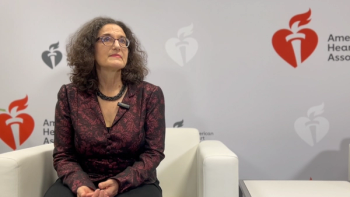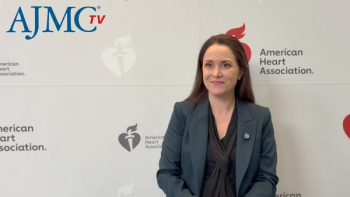
Dr Gustavo Fonseca on Key Takeaways From an FCS Analysis on Clinical Trial Enrollment

Gustavo Fonseca, MD, FACP, physician director of clinical research, Florida Cancer Specialists & Research Institute (FCS), discusses the results from a late phase complexity analysis on barriers to clinical trials regarding biopsy requirements.
Patients must go through more hoops to be enrolled in clinical trials because of increased molecular targets and biopsy mandates, says Gustavo Fonseca, MD, FACP, physician director of clinical research, Florida Cancer Specialists & Research Institute.
Transcript
Can you describe the aim of Florida Cancer Specialists & Research Institute’s late phase complexity analysis and the methods used to complete the study?
We’re here to present about an analysis that we did in our clinical trials and how it affected our patients. We had noticed that the complexity of the studies had become, at least anecdotally, greater. We have noticed a greater proportion of patients that may have signed consent forms and withdrew it or the doctors withdrew it for them, maybe for some delays or practicalities that became an issue. And our numbers of screenings kept going up, yet the patients enrolled would not. Therefore, we wanted to look at in an objective fashion, what was happening in the last couple decades.
We knew we had complete data from 2022. Therefore, we compared the first 100 patients in 2022 with the first 100 patients in 2012. So, that analysis is what we presented here today: about whether the protocol mandated that there would be a target identified in the patient that was not considered standard of care at that time.
So as a target, we would call, let’s say, a marker mutation, a molecular driver, or immunological driver that would have not been otherwise done if the patient had not been in a clinical trial, and whether the trial mandated the development and performance of a biopsy or submission of the previously obtained biopsies, as well as while-on-study biopsies. That's the analysis we'll be presenting today.
What were some of the key findings of this analysis, and did anything surprise you?
What we did find out is that the patients have to go through more hoops to get into the clinical trials. But also, to some degree, it’s because we are using more targets, and we are using more biopsy mandates on the studies. Although that was not the direct observation or evaluation of the studies, the effectiveness of these medications is greater, and therefore the studies are greater, and therefore, it is a needed intervention that we are seeing.
But for our staff, the CRCs, clinical coordinators, they do have to go through a lot more hoops, many more hoops than they used to. For example, we may need to obtain 20 unstained slides from operations prior to biopsy. We actually find out that sometimes we may not have that or may exhaust the tissue and the Pathology Department may prevent us from exhausting tissue even though the patient may have signed a consent that their priority is to be in the clinical trial and they may exhaust what the hospital wants, but some pathologists would not allow us. And so, we saw that some patients had to have biopsies just to get into a clinical trial, for example.
In a nutshell, we saw greater use of the target molecules as part of the clinical trial, mandated by the study, and the number of studies that were not study target mandated declined, of course, and biopsy requirements were greater.
Newsletter
Stay ahead of policy, cost, and value—subscribe to AJMC for expert insights at the intersection of clinical care and health economics.















































